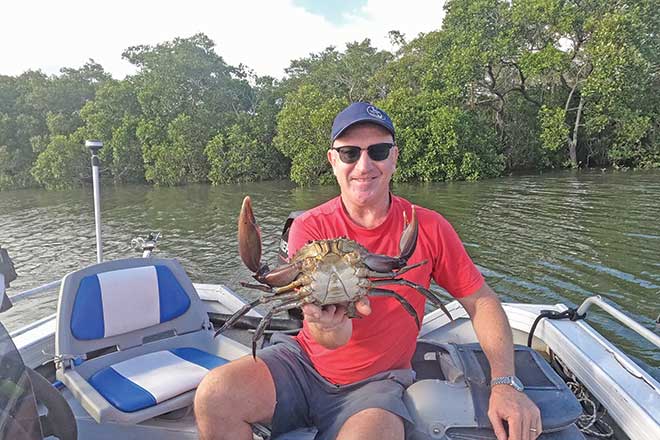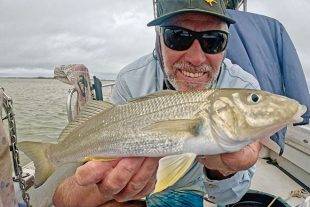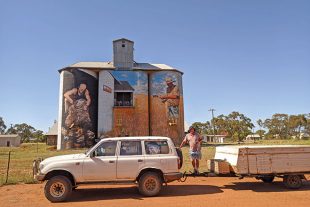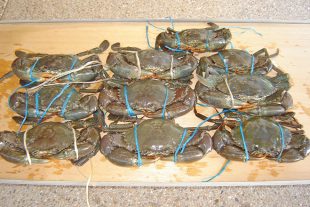Hi folks, well summer is upon us and with that comes seafood season!
This means mud crabs, sand crabs and, as summer progressives, banana prawns in southeast Queensland.
I’ll save the banana prawns and sand crabs for future articles, with the focus for now being on catching a haul of beautiful mud crabs.
December crabs
December is a great time to chase mud crabs, for a couple of reasons.
First, as we experienced through spring, a persistent northerly wind has made it increasingly hard to get into Moreton Bay or offshore.
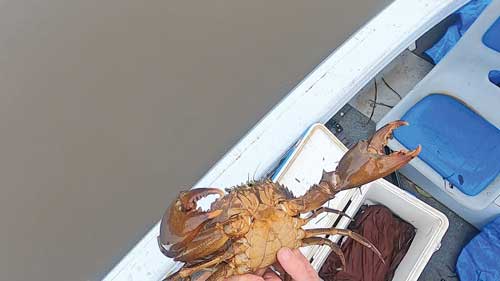
Therefore, crabbing in the protected estuaries becomes an excellent option to get your boating fix and a good feed too.
In addition, December is the perfect time to chase muddies because during October and November mud crabs in southeast Queensland moult, so are much harder to catch.
Crabbers should also be aware that during these months particularly, if they catch light crabs with clean shiny green shells, they are likely to fail the ‘full crab test’ and should be returned to the water.
Crabs with a newly hardened shell will have little to no meat.
You can access how full a crab is by turning the crab over and firmly pressing the abdominal plates adjacent to the second walking legs.
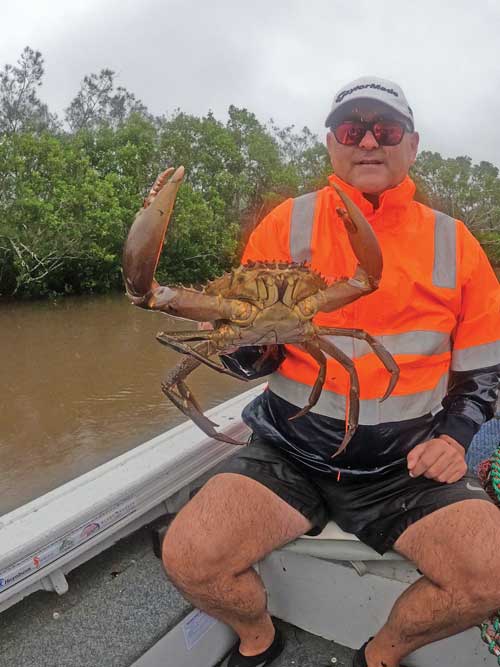
If there is no flex the crab is likely to be full of meat.
With that in mind and to maximise your chances of success, let’s take a look at the when, where and how to catch muddies.
Best times
There are a few key factors to consider with regards to the best time to target mud crabs.
First, mud crabs are most active at night.
This does not mean you won’t catch them during the day, especially after rain, but during the night is when they typically forage for food.
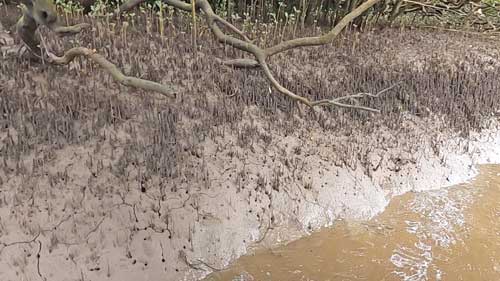
During the day, they are more likely to hide in mud pits away from predators.
A word of caution though if setting your pots but won’t be about during the day or night.
Sadly, there are a small number of criminals – yes, they deserve that title – who like to raid and even steal mud crab pots.
If crabbing overnight, put your pots in late in the day and recover them first thing.
The other thing you can do is try to make your pots less obvious by tying your rope to a fixed object above high water, such as a jetty or tree.
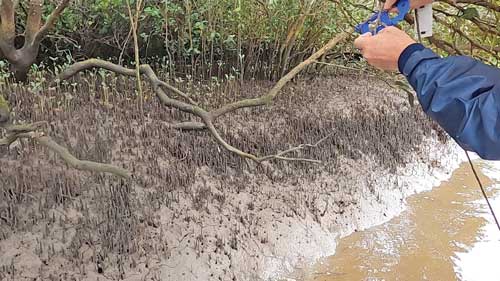
The rope must have a tag attached to it above the high-water mark, with the user’s surname on it.
Sunken and unmarked pots are illegal.
Camouflaged rope is a good idea in this situation, which you can easily buy.
Second, bigger spring tides normally associated with a new or full moon period tend to produce more crabs.
Bigger tides push further up creek and river systems, with their offshoots giving crabs access to new food.
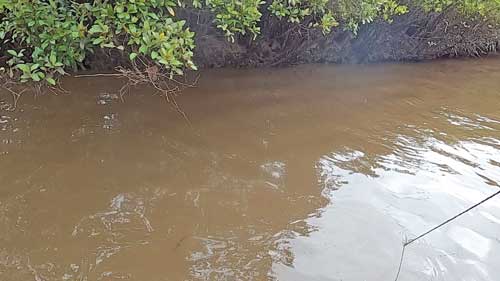
With these bigger tides, if you do crab throughout the day, it can pay to move your pots up and down the estuary.
However, if crabbing overnight, it is worth leaving your pots in these less frequently accessed areas, provided you time your tides to return to them in the morning.
Third, rain will also get the crabs moving, but where you set your pots depends on how much rain there has been.
It was a very dry spring, meaning mud crabs are likely to be dispersed further up the estuaries, as the saltwater intrudes further upstream.
As a result, it might be worthwhile to put your pots further upstream than usual.
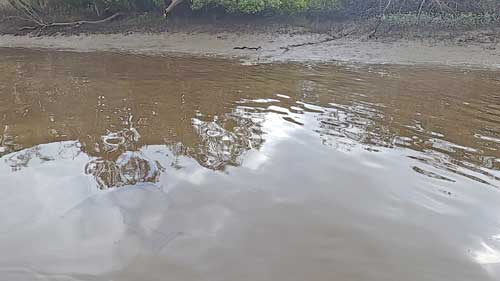
However, if summer sees a few showers or a storm, it’s worth spreading your pots through the system to locate the crabs.
Rain will flush them out of their holes to feed, however if there is a lot of rain over a day or more and the water becomes too fresh, the crabs will move with the current towards the entrance of the estuary.
In this situation, move the pots to deeper water because the more-dense saline water will sit below the muddier fresh water on top and move them closer to the entrance.
Lastly, as a general rule in summer, especially after moulting in early spring, mud crabs are more active in warm water temperatures.
However, it is a myth that you can’t catch crabs in months with an ‘r’ in them.
While there may be fewer crabs, winter crabs can often be very full.
More the issue is that in winter, their activity slows, so moulting ceases and size doesn’t change, therefore stocks of legal-sized crabs will not increase and in fact decline with catches.
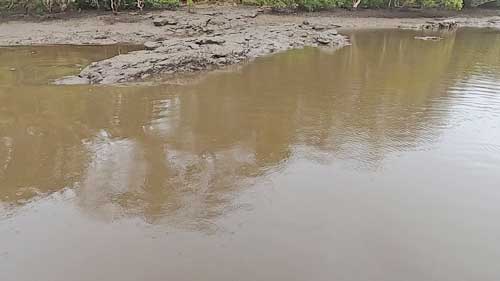
Where to set your pots
In general, the best crabbing is up estuaries or creeks in areas lined with muddy mangrove lined banks.
However, mud crabs can also be found in a few open coves, such as Moreton Bay.
In these more open areas, they can be located around the edges of mangroves on the bay islands, around muddy bottoms where it drops off into channels and also along muddy rocky spots
where the crabs make homes under the rocks on these mud flats.
Be aware when setting your pots that the Queensland Fisheries website notes it is best practice to make sure your pots or dillies are in water deep enough at all stages of the tide, so marine
animals caught in the gear are not exposed to the sun and unwanted crabs can be released alive.
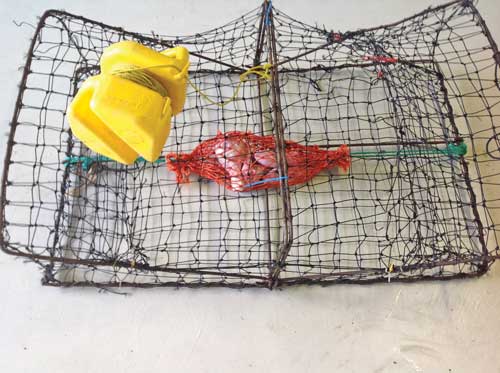
Furthermore, according to a Fisheries Ministerial Statement from 2020, it is an offence if your crab apparatus contains marine product and is out of the water.
Otherwise, entrances to creek drains that are lined with mangroves and wide enough to get a small boat into are perfect locations for mud crabs.
Try to get your pots as far up the drain as you can, and under water at all times.
If you can’t, place the pots at the entrance.
Steep muddy banks – particularly those under fallen trees, overhanging trees or mangroves – are also top spots.
The tree roots help hold the mud together, providing a permanent secure home as well as a bit of a break in the current, which can concentrate food sources washed down in the flow.
A particularly good spot worth crabbing is near fallen trees around sharp bends in creeks that have channelled out a deeper hole.
The current will also carry the crabs through here after rain.
Types of pots
There are a number of considerations in choosing the right crab pots, including price, quality, size and weight.
If you intend to crab in areas with a reasonable current and want to have your pots for a long time, go for heavy duty higher quality pots.
When I go crabbing with a friend, we often set and collect our legal maximum of four pots each.
So, setting and collecting eight pots can take a bit of time.
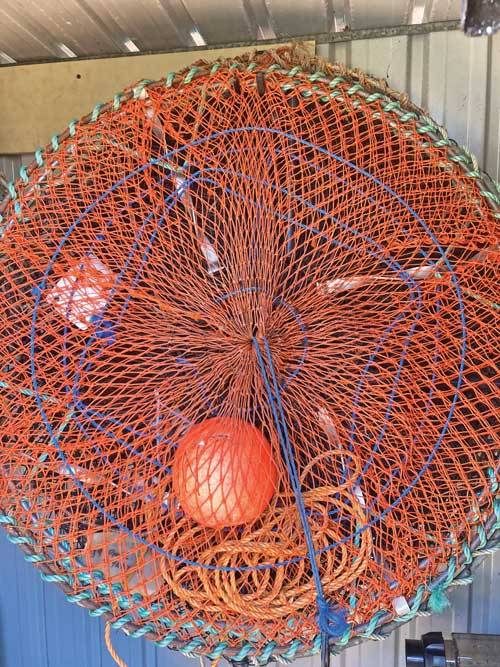
Consequently, my favourite crab pots are big round four-entry pots that have collapsible aluminium struts, which make set up and collapsing a breeze.
You can also get some with plastic pipe legs that are permanently connected to the base of the pot and have an indent on the other end of each leg for securing to the top ring of the net.
The latter pots can take a bit of muscle though, particularly to pull the rings far enough apart to get the last leg in – but you can now buy a ‘crab pot spreader’ from Crab n Gear to make this job easier.
I find pots with connected legs are better than the removable leg pots because occasionally you may lose a leg or two, plus they take longer to put together.
The other big advantage of the deluxe or heavy duty round pots is that they usually come with huge built-in bait bags.
These allow you to put lots of bait in the pot but not have it exposed and easily eaten by crabs and fish, as wire bait holders do.
While you can still buy the old lightweight rectangular crab pots with two entries, they tend to have an inferior catch rate due to only two entries.
Furthermore, you also need to buy a portable bait bag to put inside them, and often the entries are very loose upon purchase and need tightening up with snap-lock ties in order to create a
springier entrance, which is also harder for them to escape out of.
If you do make those refinements, these are probably good pots for land-based anglers who have to walk a reasonable distance because they’re less heavy.
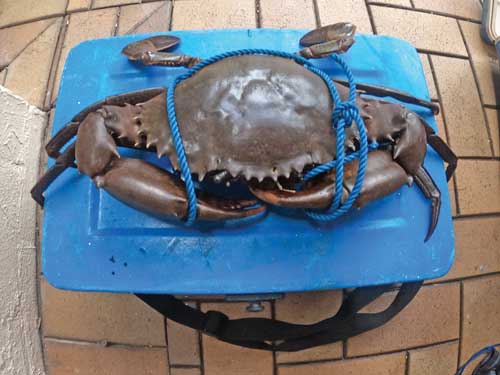
Floats and rope
Floats are a personal preference, provided they meet with the state regulations.
That is, they must be light coloured for visibility to boaties and must be no less than 15cm in any dimension.
There are also some good crabbing kits on the market that are very handy and include floats, ropes, tags, marker pens and more.
Another tip to reduce motor strike on your ropes is to use lead weights on them, so they’re not floating just below the surface.
Best bait
Fresh bait is best for crabbing, so if you leave your pots in the water, you should always replace your bait once or twice a day.
Top crabbing bait includes chicken carcasses, chicken pieces, pilchard, mullet or other oily fish.
I go to my local butchers for cheap chicken carcasses at $0.50 each or fresh seafood shops for cheap oily fish carcasses.
If you do use whole fish, if frozen make sure you defrost it first and also make some cuts in it to help release smells and oils.
Hopefully these tips will help you to catch a few extra crabs this summer and beyond!
For more tips and reports, check out my social media pages, Ontour Fishing Australia.
Until next time, bag your friends, not your limit.
 Bush ‘n Beach Fishing Magazine Location reports & tips for fishing, boating, camping, kayaking, 4WDing in Queensland and Northern NSW
Bush ‘n Beach Fishing Magazine Location reports & tips for fishing, boating, camping, kayaking, 4WDing in Queensland and Northern NSW

